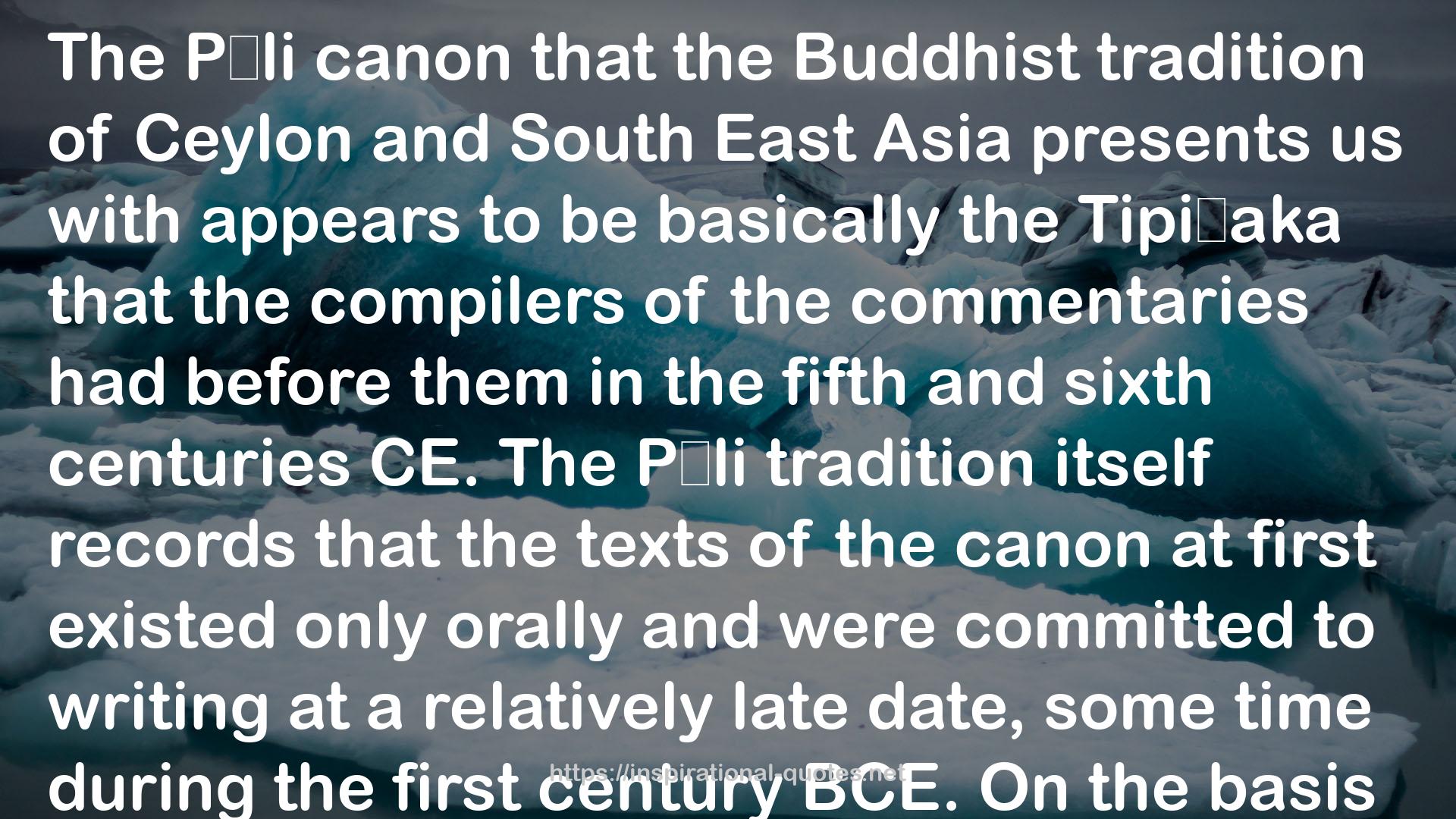" The Pāli canon that the Buddhist tradition of Ceylon and South East Asia presents us with appears to be basically the Tipiṭaka that the compilers of the commentaries had before them in the fifth and sixth centuries CE. The Pāli tradition itself records that the texts of the canon at first existed only orally and were committed to writing at a relatively late date, some time during the first century BCE. On the basis of this tradition – and scholars have generally looked upon it quite favourably – we may be justified in concluding that the Pāli canon as we have it is substantially as it was written down at that time. Presumably this canon was brought to Ceylon from India at some earlier date, possibly by Mahinda, who, according to the Pāli tradition, came to Ceylon some time during the reign of Asoka. This tradition may have a kind of corroboration in the form of Asoka's thirteenth rock edict. Certainly the language of the canon appears to be entirely consonant with a north Indian provenance, and any evidence for significant additions to the canon after its arrival in Ceylon is at best inconclusive. "
― , The Buddhist Path to Awakening
